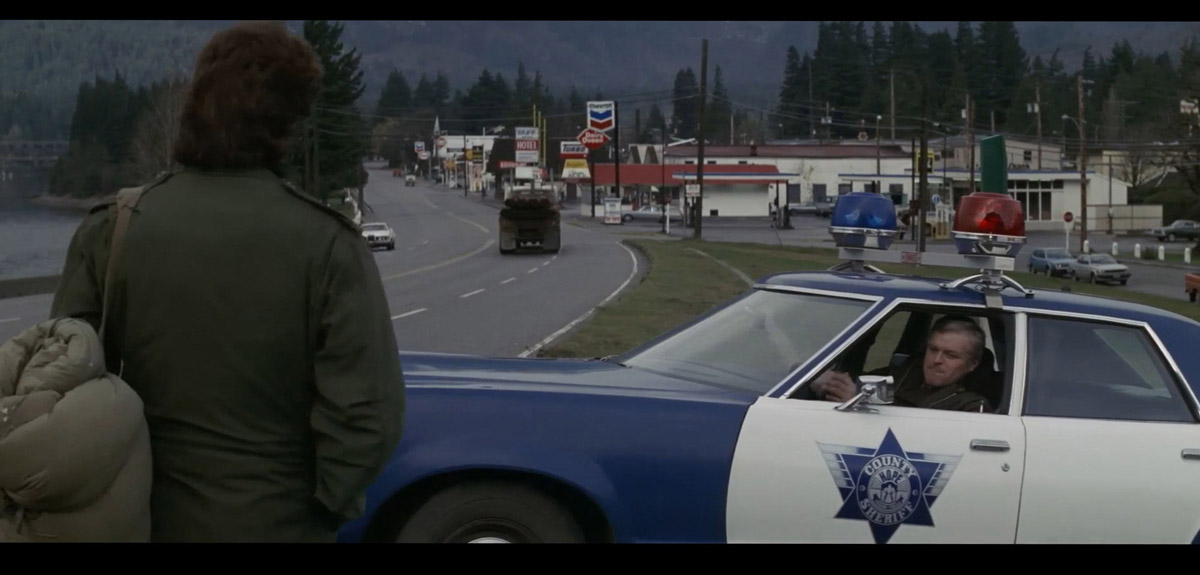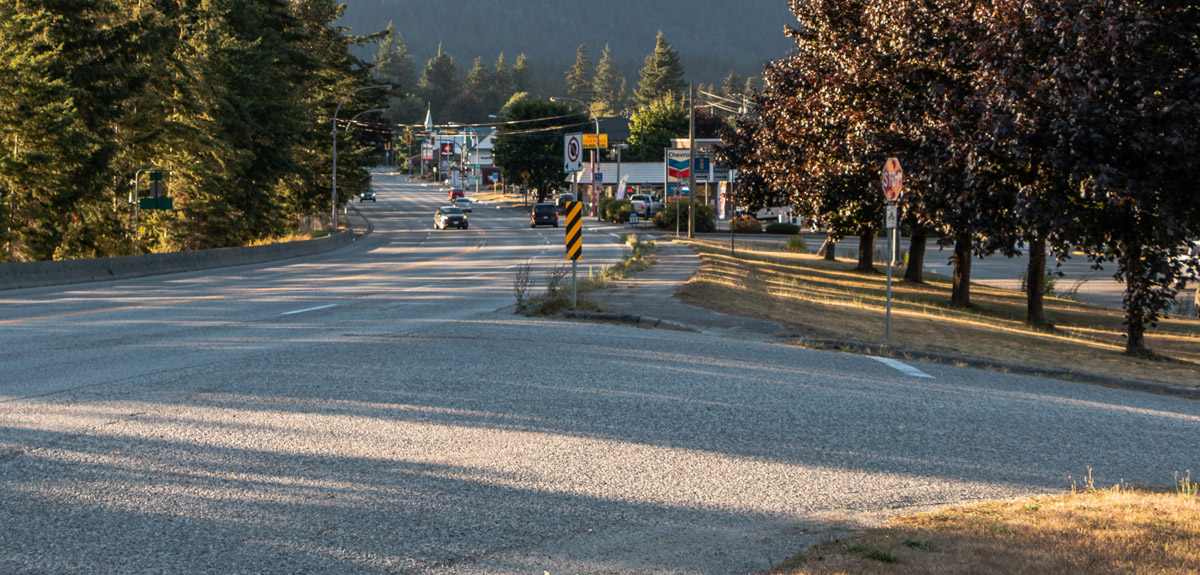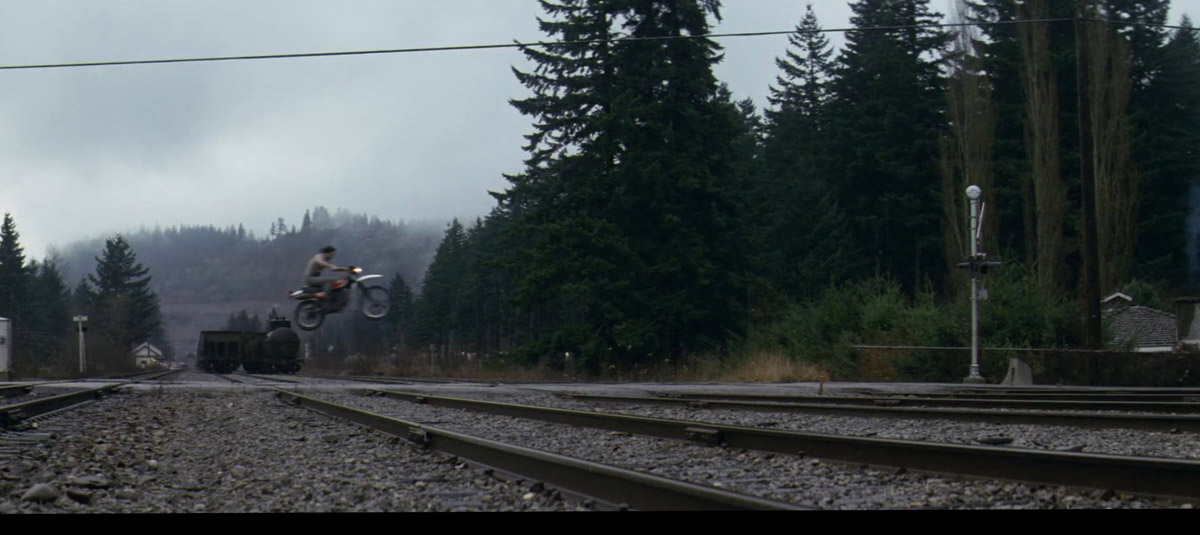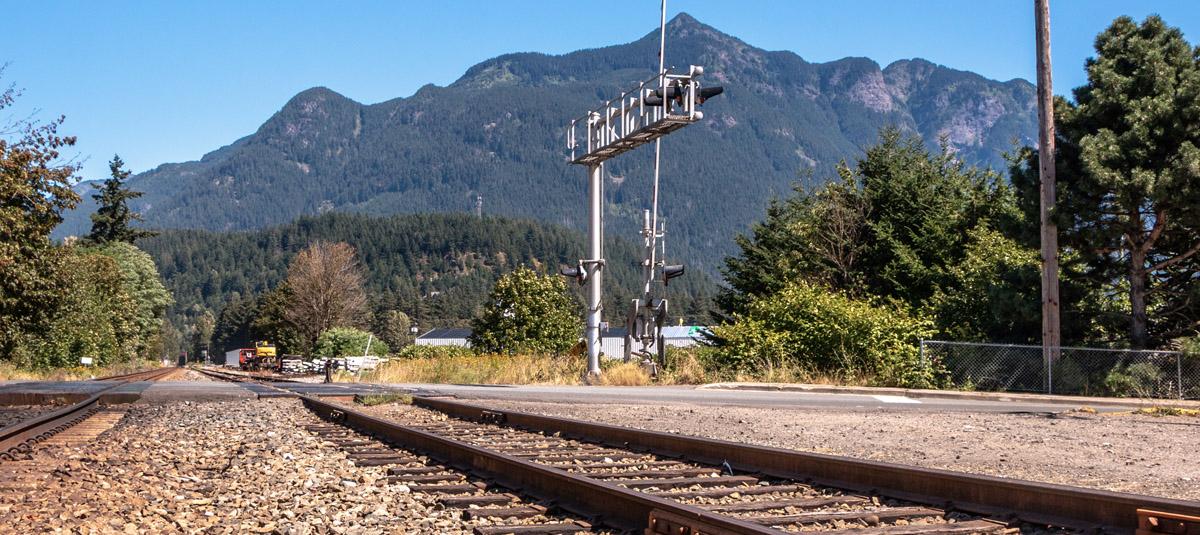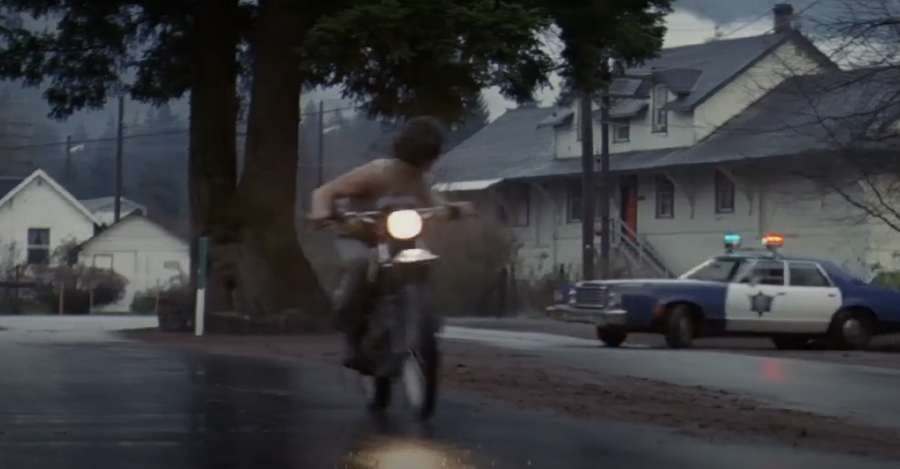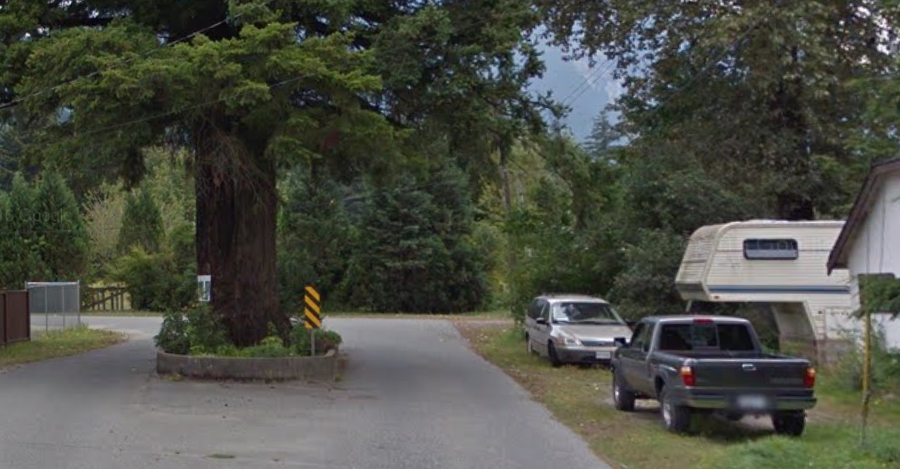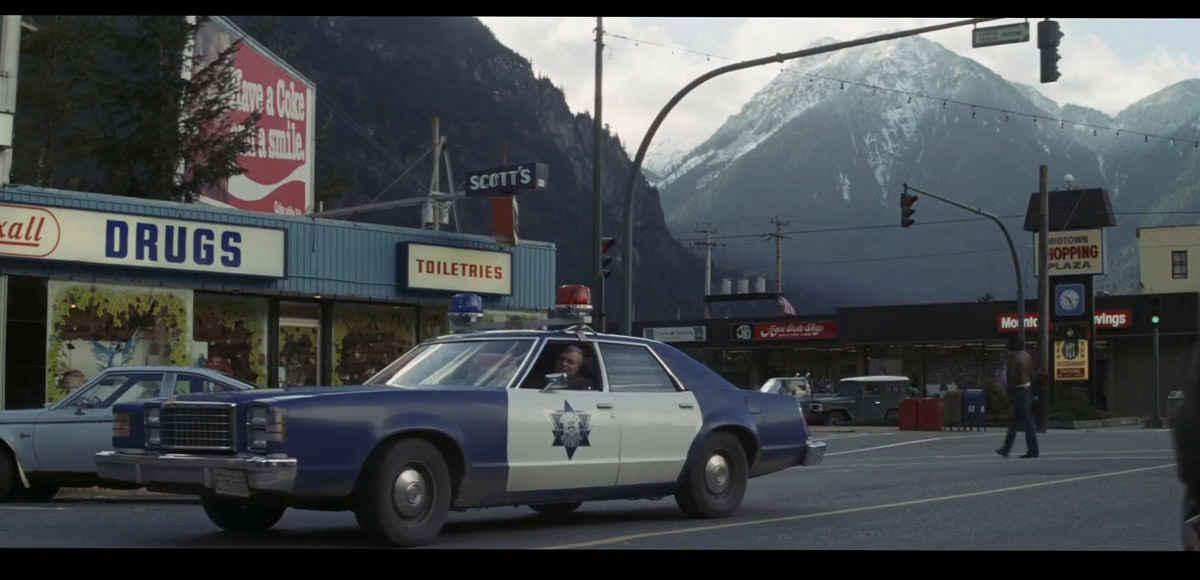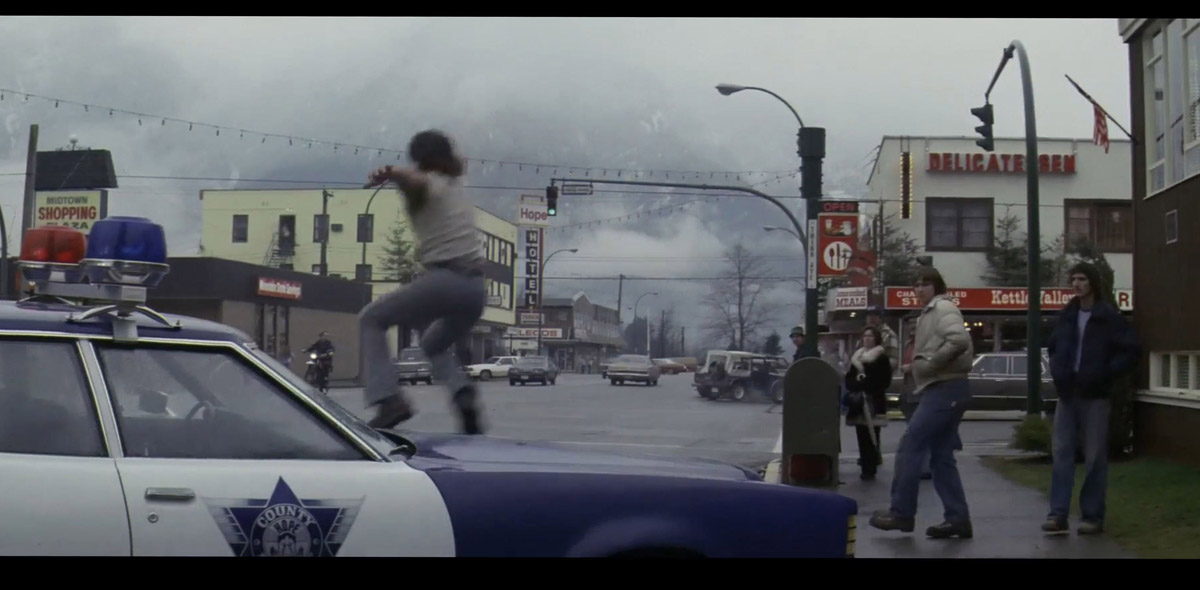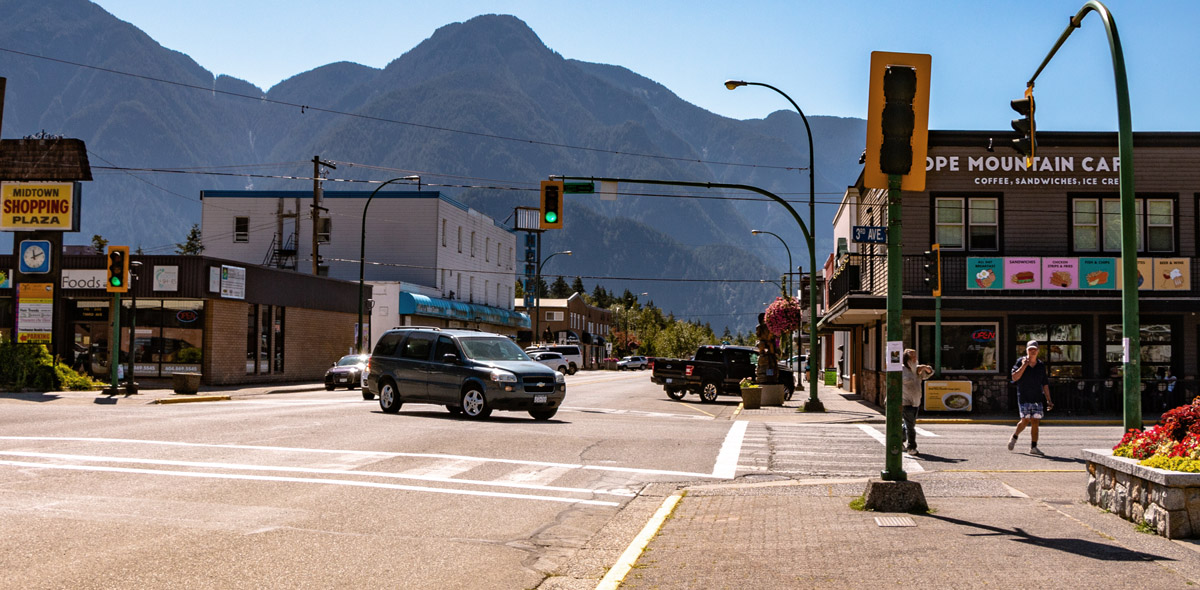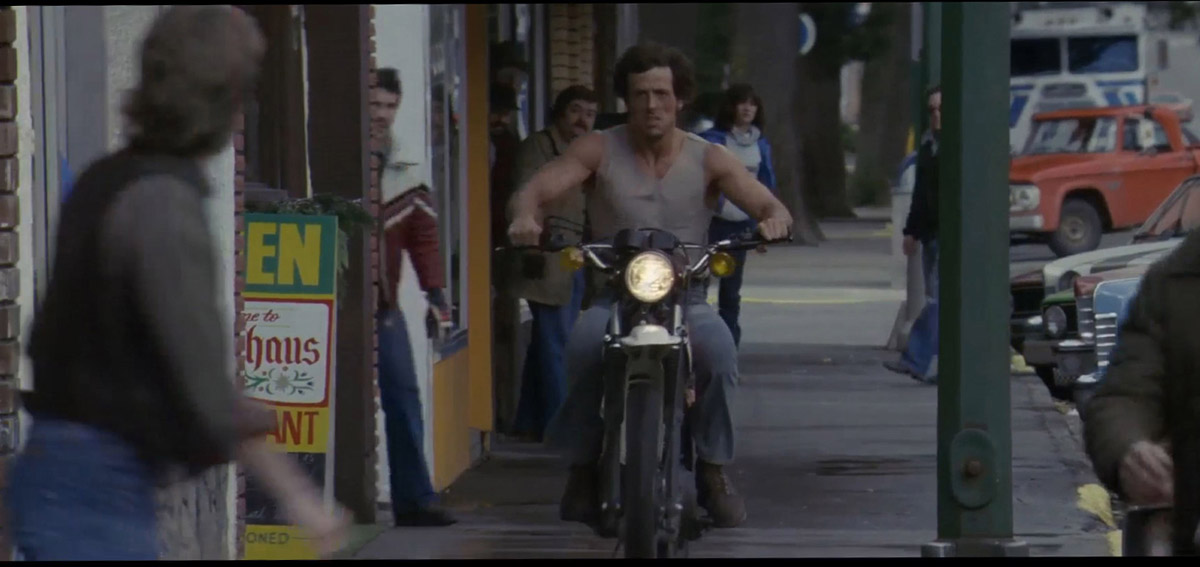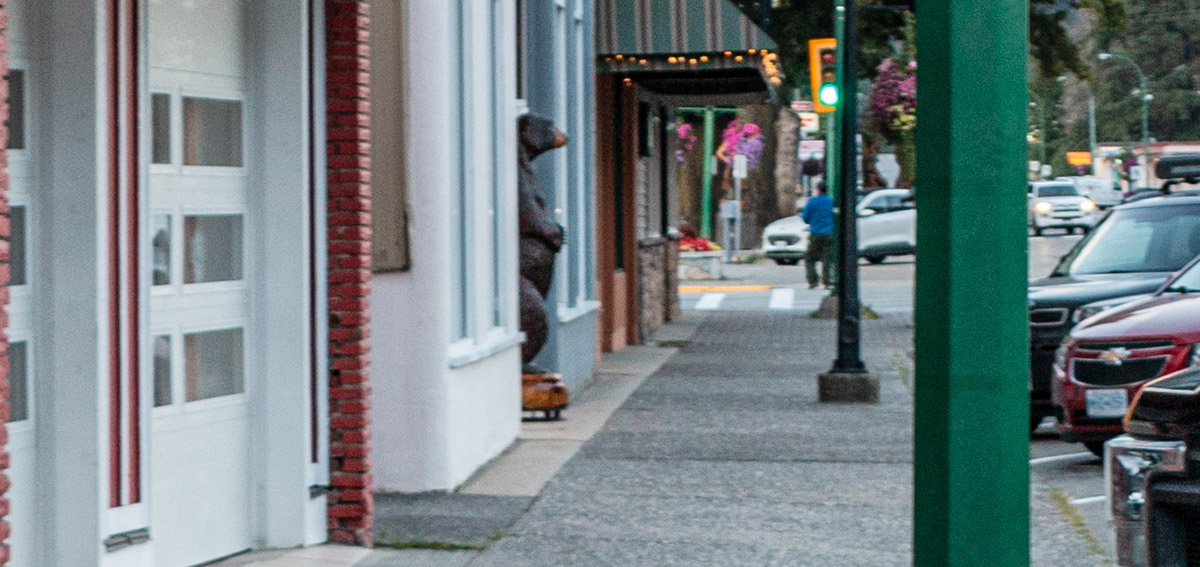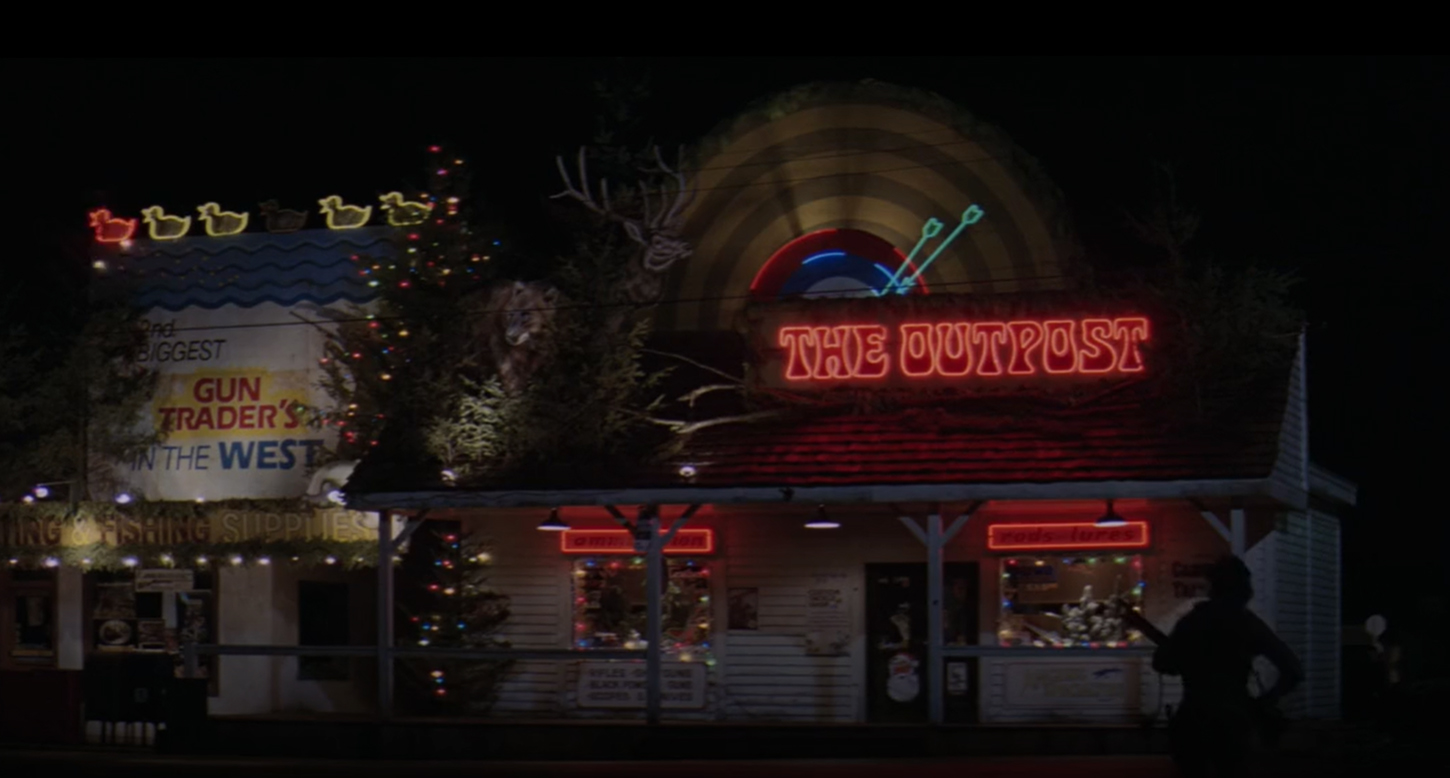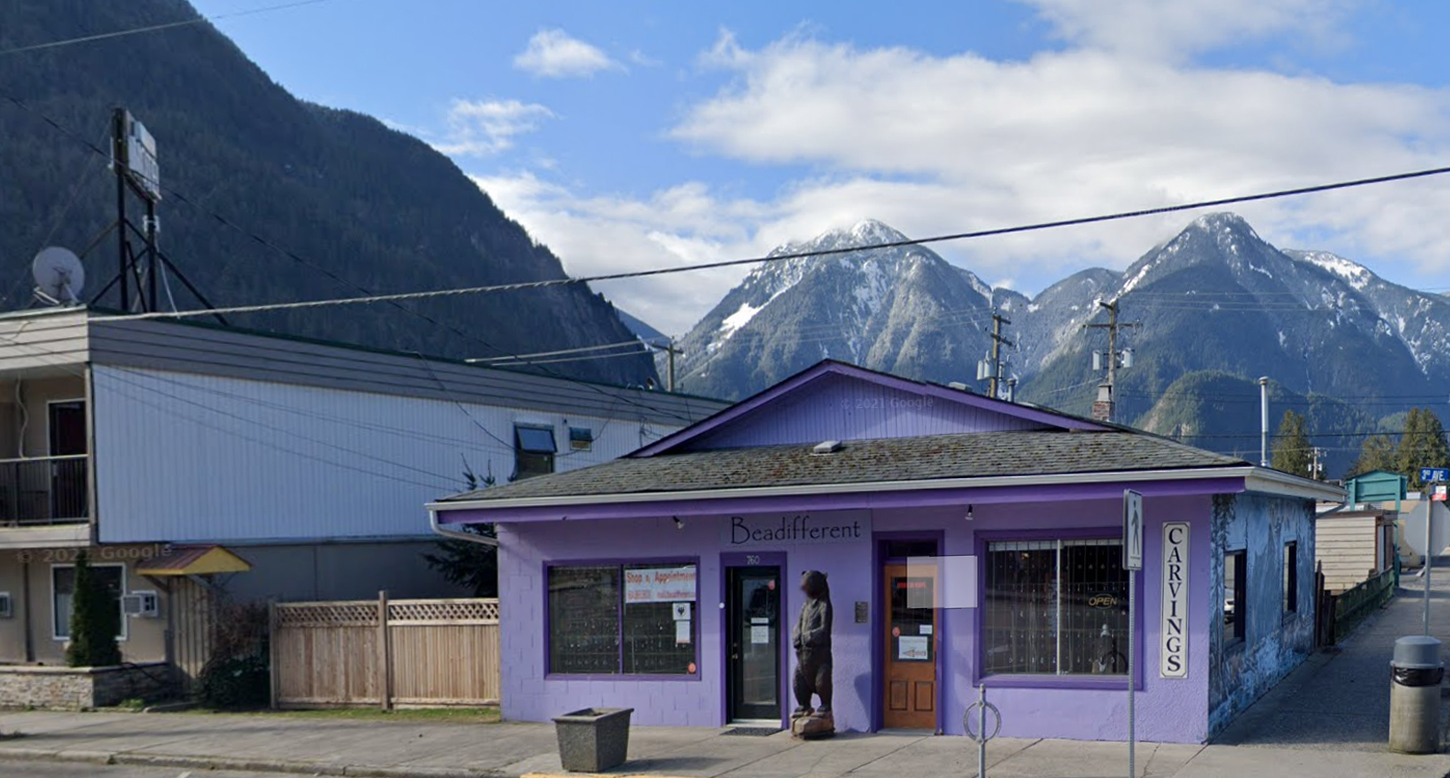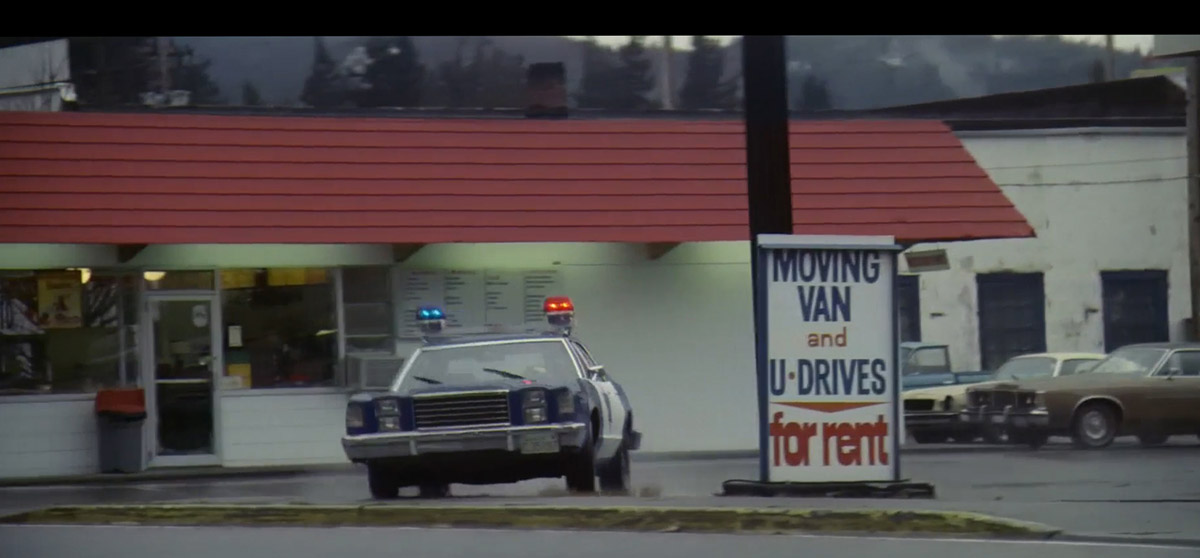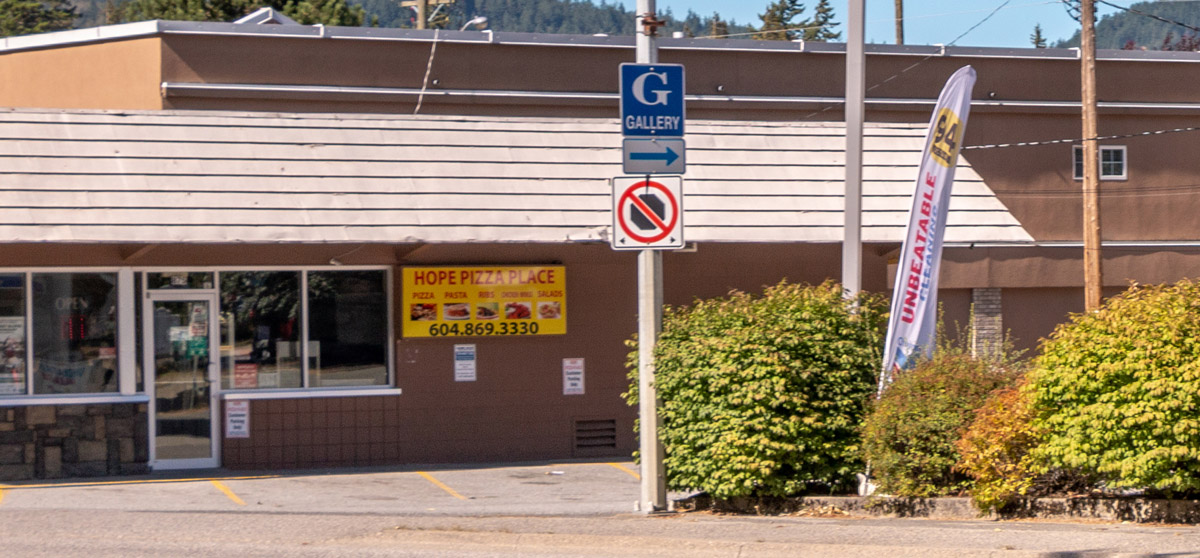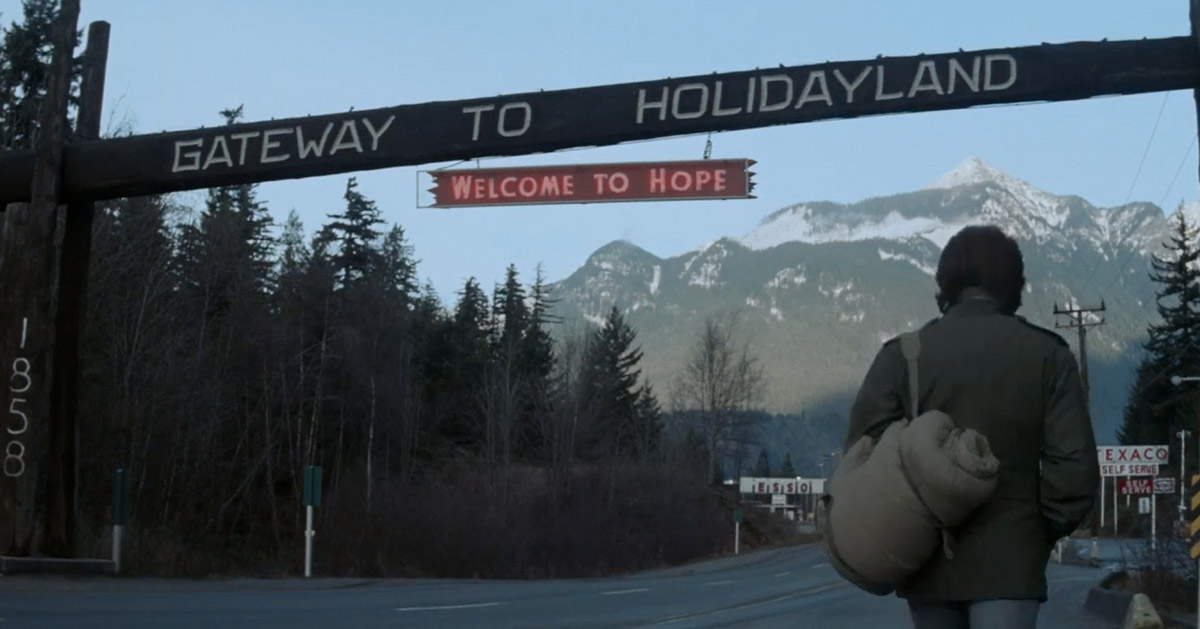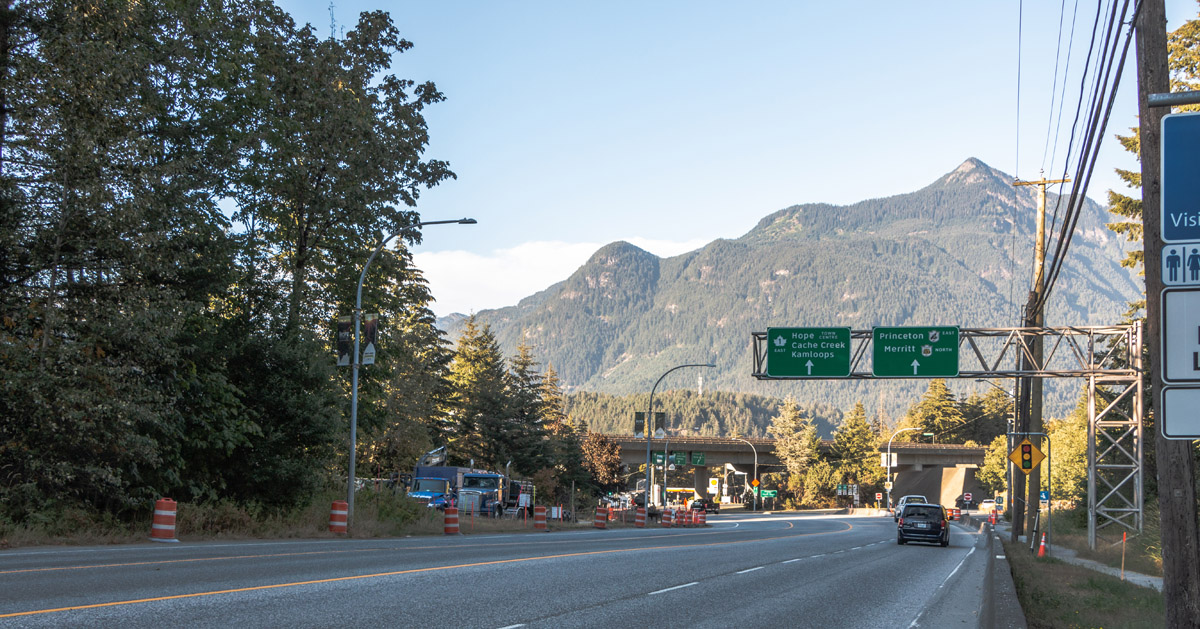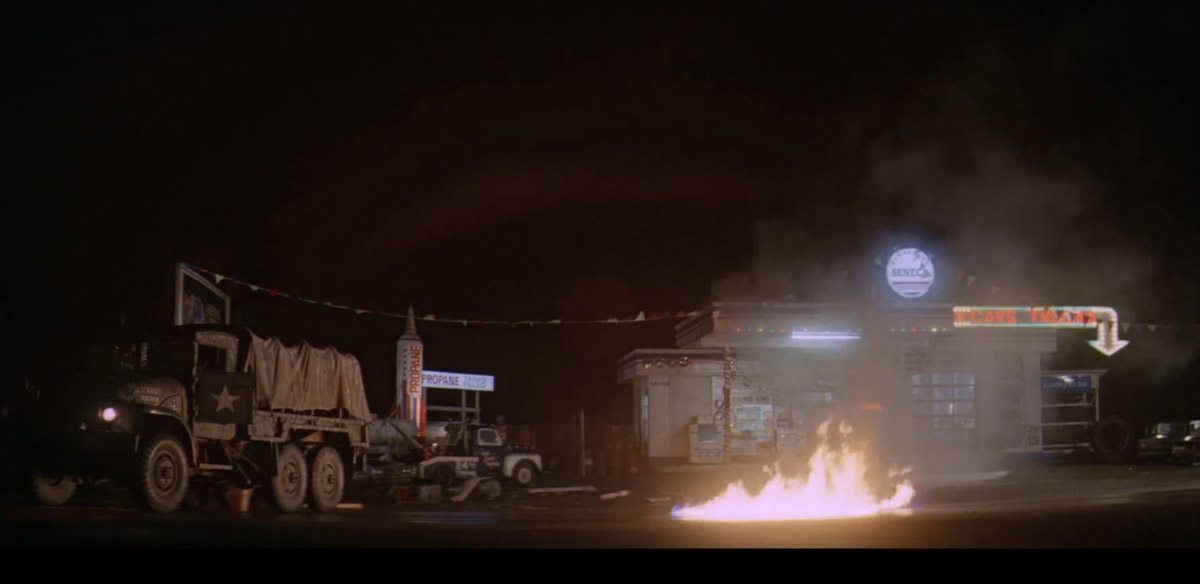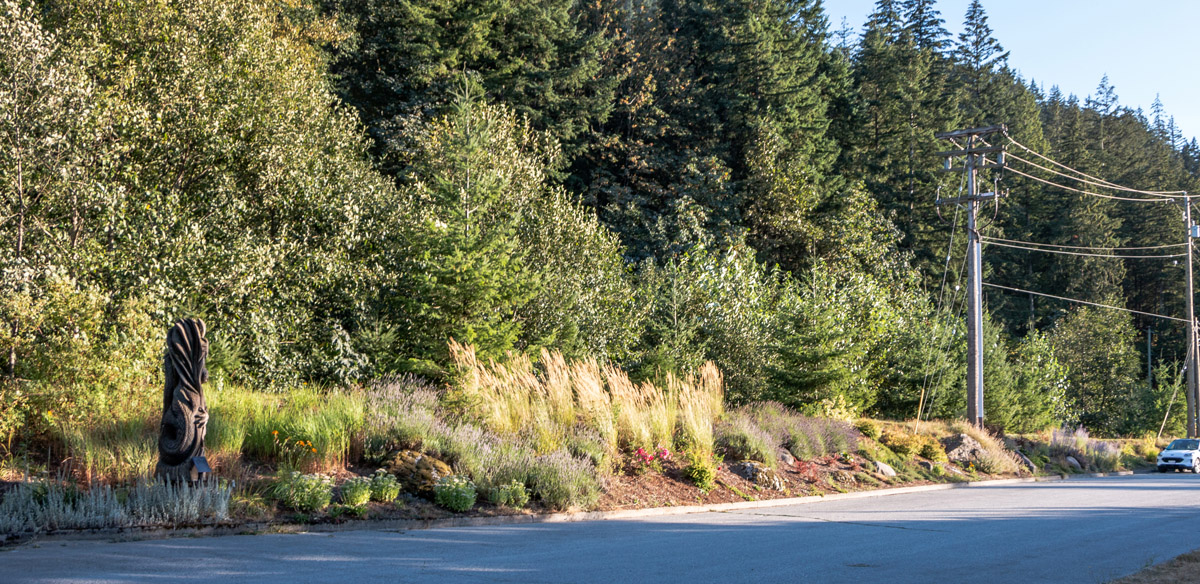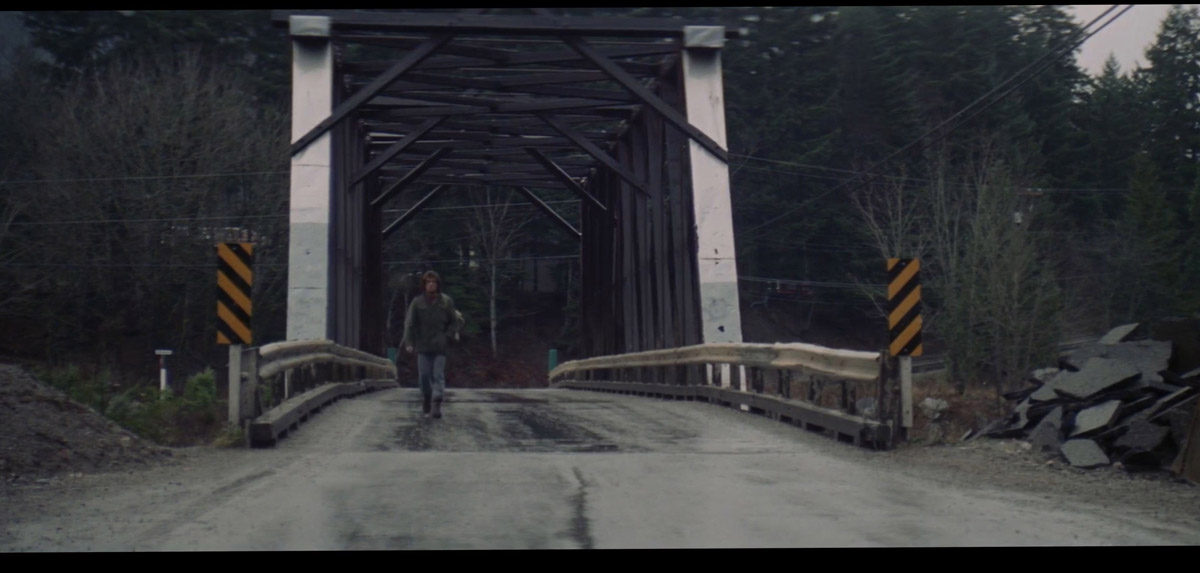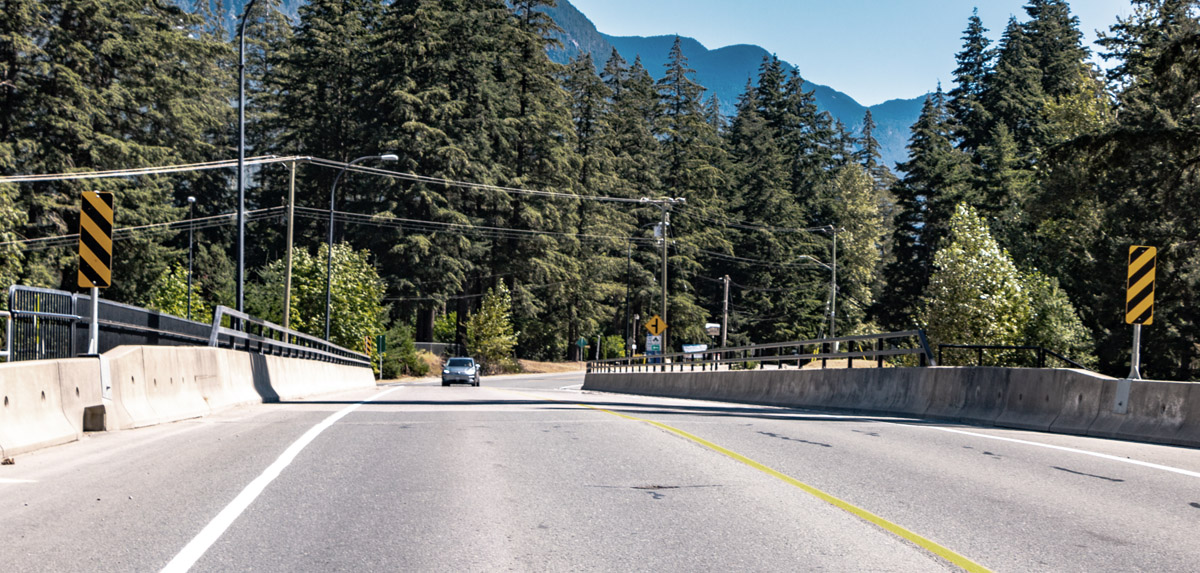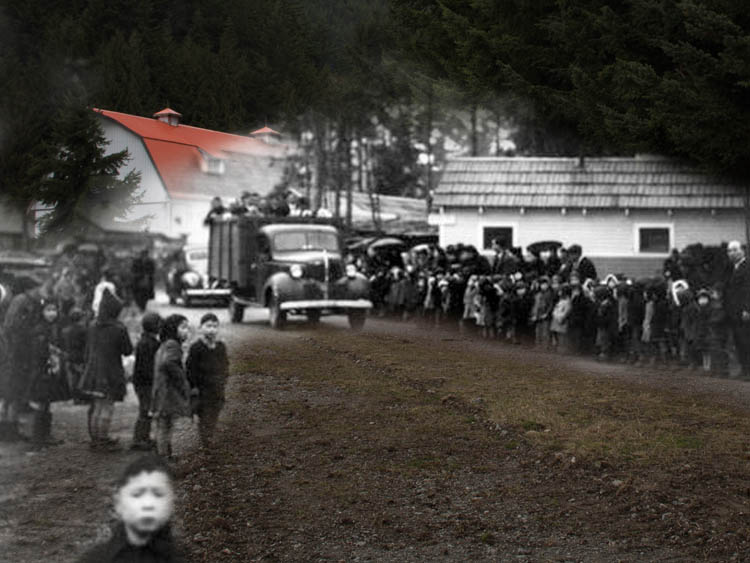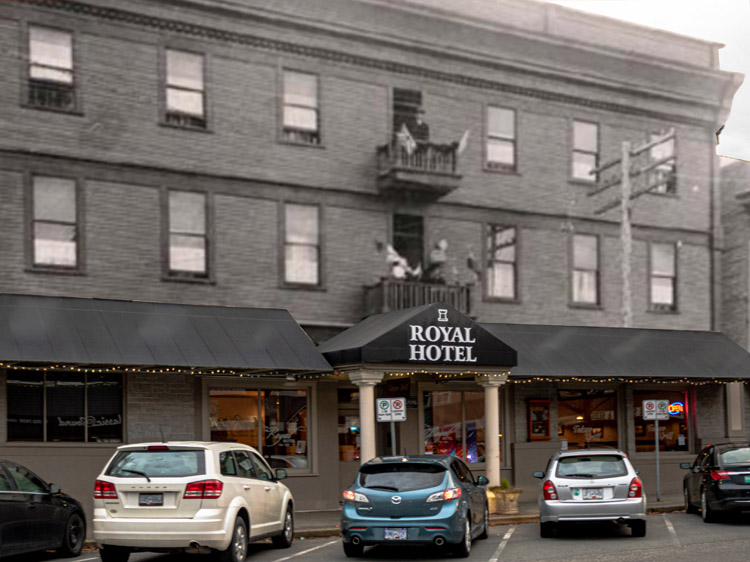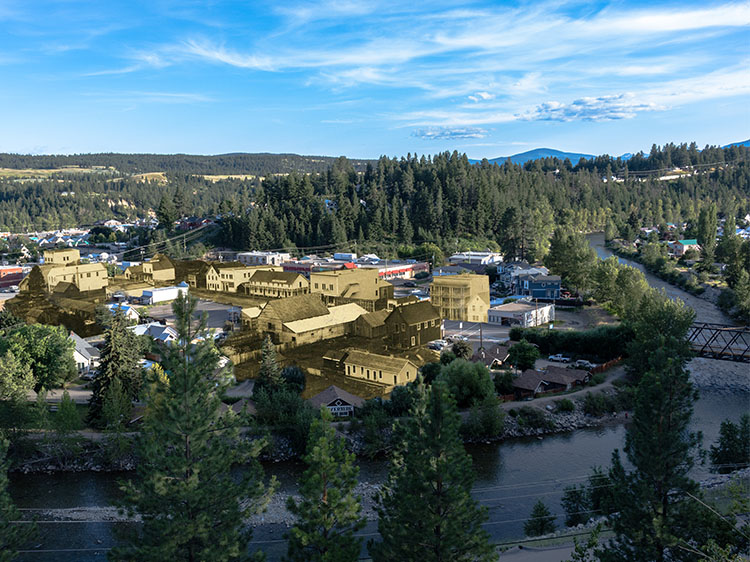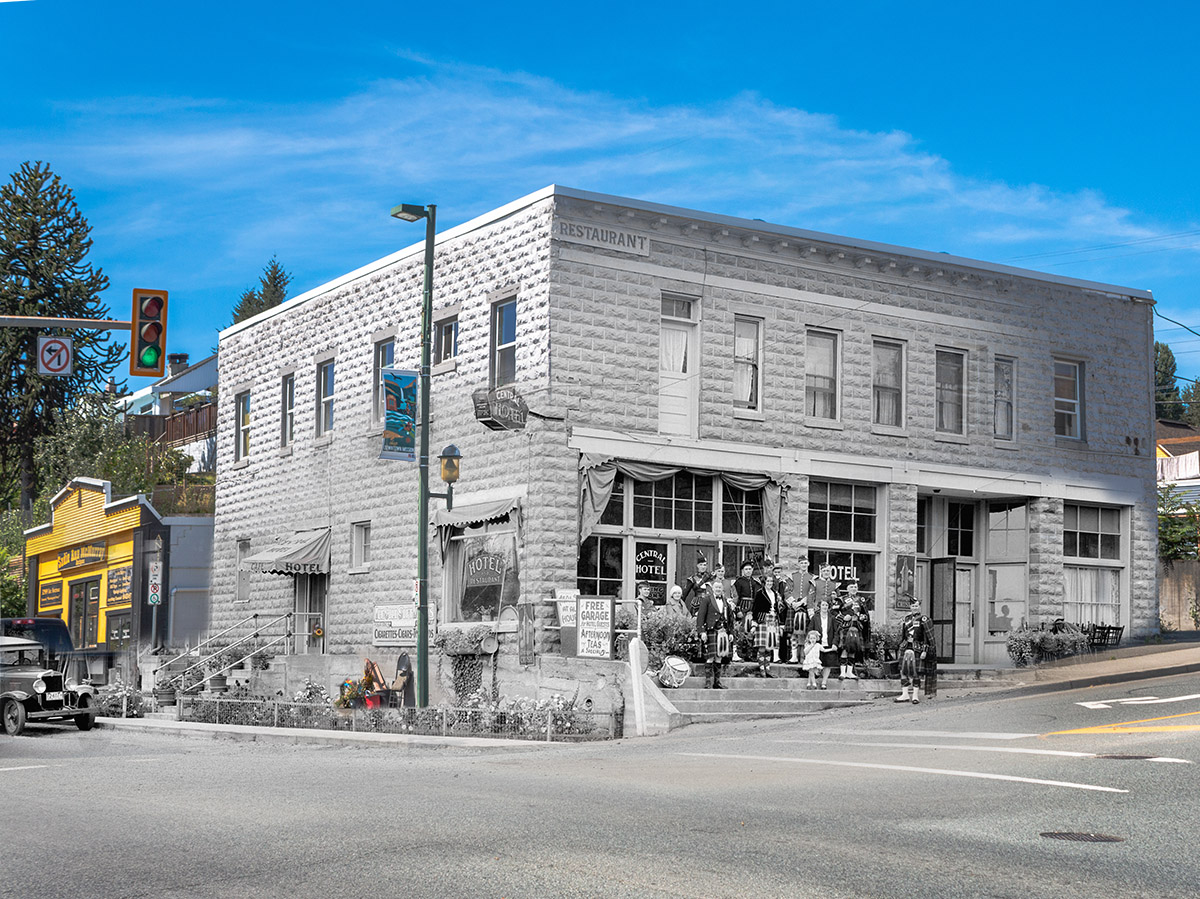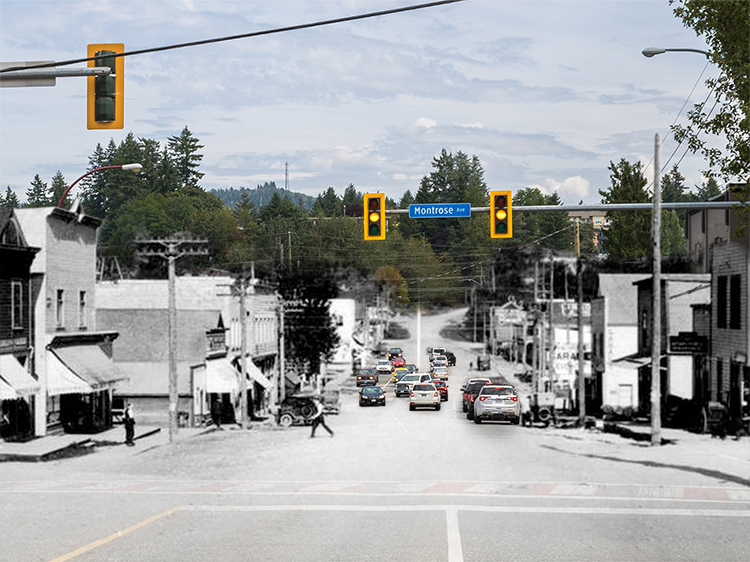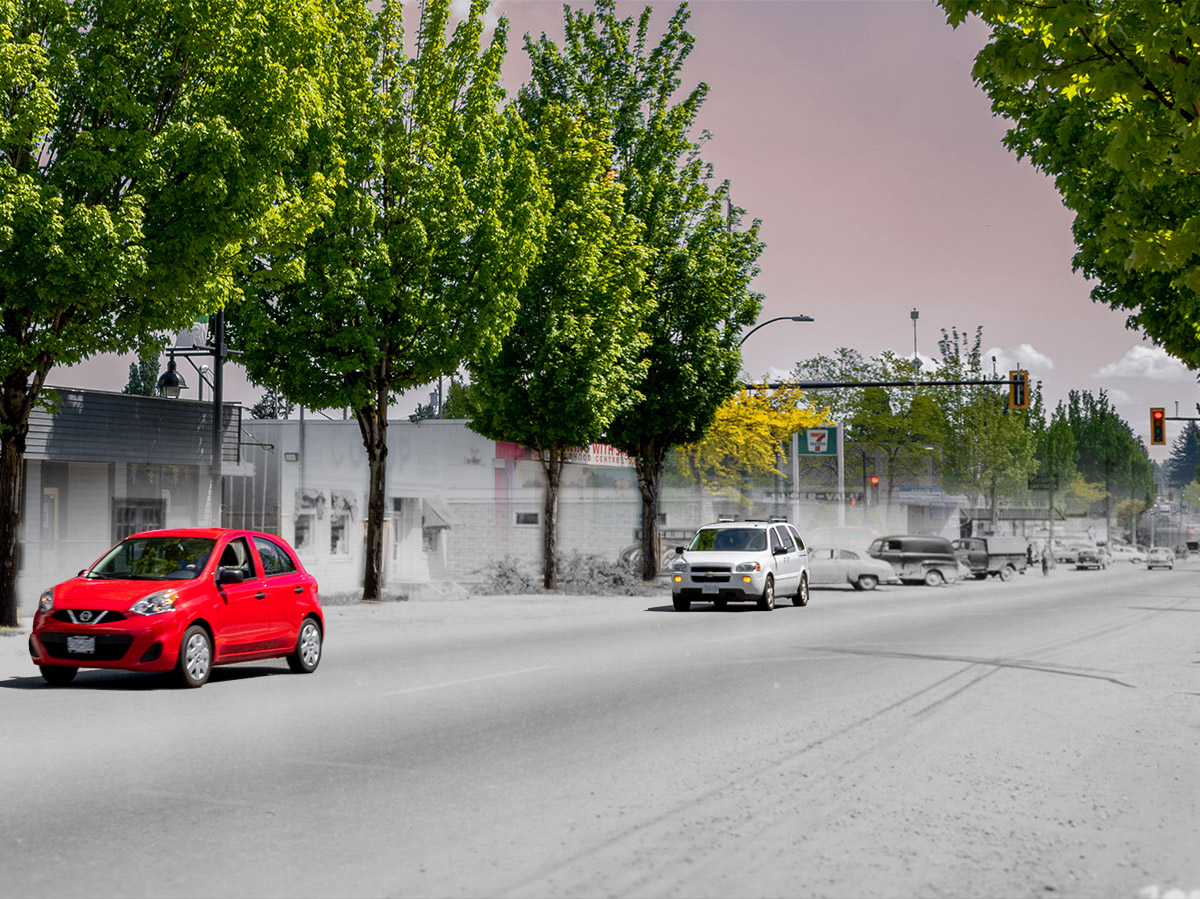Walking Tour
Filming Rambo: First Blood
1982-2022
Alexa Dagan
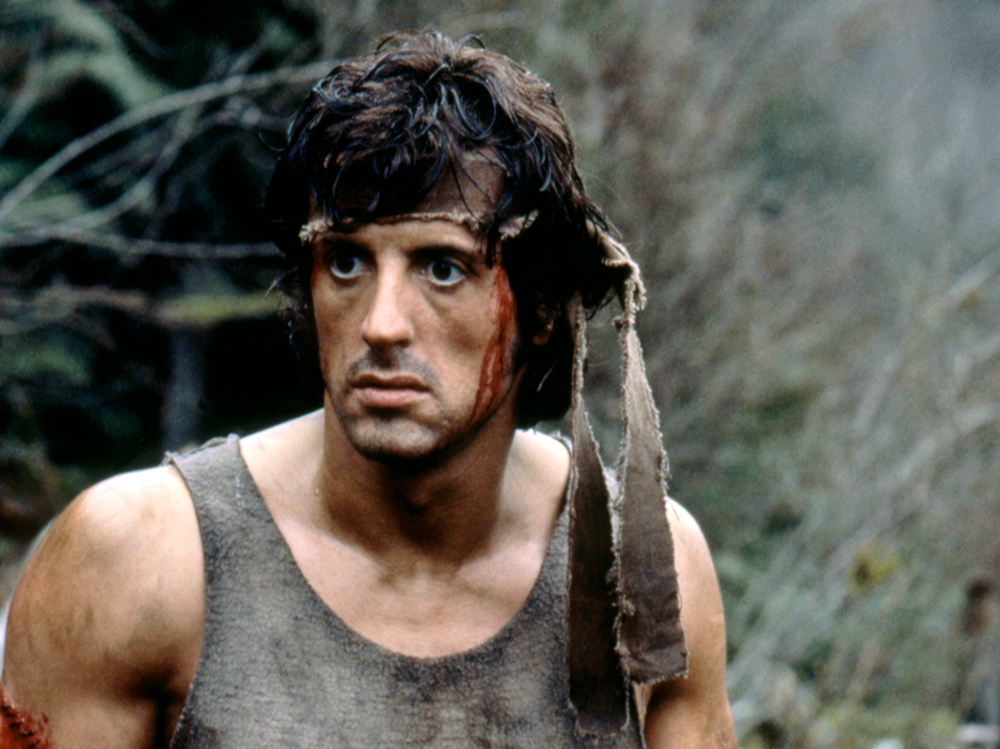
In November of 1981, hundreds of people—cast members, crew, and extras—descended on the small mountain town of Hope, British Columbia, to film one of history's most influential action movies. Rambo: First Blood tells the story of Vietnam War veteran John Rambo (played by Sylvester Stallone), who travels to the fictional town of Hope, Washington, and, while there, is arrested under a trumped up charge by the town's sheriff, Will Teasel (Brian Dennehy). Rambo escapes after a deadly conflict between the two men, and a bloody manhunt begins, one that almost levels the small town.
In October of 2022, Hope will celebrate the 40th anniversary of First Blood's filming. Today, four decades after the movie's theatrical release, thousands of people still visit Hope every year to see the town where their favourite movie was shot. The film includes much to enjoy for viewers of all kinds: exciting action sequences, impressive stunt work, and intelligent and emotional dialogue which explores themes of post-traumatic stress disorder, the mistreatment of war veterans, abuses of power by authority figures, and the horrors of war.
Join us as we explore the town where it all began and travel through some of the iconic scenes from one of pop culture's most enduring films.
Route
The tour begins on Water Avenue at the location of Rambo's first encounter with Sheriff Teasle. From there, we will head east to the crossing of 3rd Avenue and the CN railway, where Rambo performs one the most epic stunts of the movie. Next, we will stop by Hope's unique "H-tree", which Rambo speeds past on a motorcycle during the chase sequence. The following four stops are downtown, clustered around the intersection of Third Avenue and Wallace, which was the location of the sheriff's station and many other recognizable street scenes from the film's motorcycle chase.
To reach stop eight, return to Water Avenue and head south until you pass under the Hope Princeton highway overpass. Shortly after the overpass, on the left side of the road, is the entryway to the Hope Lookout Trail. Here, you will see the remnants of the "Gateway to Holidayland" sign that used to stand over the Trans Canada highway, greeting people on their way into Hope. The next stop is nearby at the site of the gas station which Rambo blows up during the movie's climax.
The second to last stop on the tour is an optional location. Visiting this stop and then returning downtown for the last stop of the tour is a four kilometre detour, so those on foot may choose to bypass it. This stop, however, is the location of the bridge where Sheriff Teasle drops Rambo off after telling him to leave town. While the location is the same, the actual bridge shown in the movie was replaced in 2011, much to the disappointment of First Blood fans everywhere.
Finally, the tour takes us back downtown to the corner of Water Avenue and Hudson Bay Street. At the nearby Chevron gas station, we visit a final scene from the motorcycle chase.
This project was made possible through a partnership with Tourism Hope, Cascades & Canyons.
1. The Feud Begins
This spot on Water Avenue was the location of the first fateful meeting between Sheriff Teasle (Brian Dennehy) and his soon-to-be mortal enemy, John Rambo. When Sheriff Teasle picks up the man who he sees only as a troublesome drifter and attempts to drive him out of town, he unknowingly becomes the catalyst for a chain of events that will shake the small mountain town to its core.
This spot has changed little since the filming of Rambo: First Blood four decades ago. The Chevron gas station, which features later in the film, is in the same location. The nearby building was once a Dairy Queen, but the roof has since been painted white, and the spot now houses the Hope Pizza Place. On the left side of the scene, the trees have grown in, blocking the Fraser River from view.
* * *
Hope was chosen as the location for First Blood out of a long list of towns in British Columbia. Producer Ed Carlin joked that he had "seen more towns and trees in this province than most British Columbians."2 BC's tourism ministry also aggressively charmed the production company with promotions and subsidies, making filming and production cheaper than it would have been in Oregon or Washington.
As the setting for First Blood, Hope is ideal. The wet, misty weather perfectly matches the dark, ominous tone of the movie. The rugged, mountainous terrain and dense coastal forest provides an opportunity to showcase Rambo's extensive survival skills. When Rambo effortlessly dispatches the team of policemen attempting to capture him, it is clear that even the roughest terrain is little more than an inconvenience.
2. Stunts
Rambo flees the police on a stolen motorcycle after he escapes from the sheriff's station. As he blazes out of town with the police hot on his trail, he executes an incredible stunt: jumping the train tracks of the CN railway where it crosses Third Avenue. Today, these tracks are still in use.
No action movie is complete without its stunts, and First Blood has enough to keep viewers on the edges of their seats. When Hope was chosen as the filming location, BC's Ministry of Transportation and Infrastructure offered the production a special permit for filming and agreed to a temporary highway detour on two conditions: first, that inconvenience to the public was as minimal as possible, and second, that absolute safety was guaranteed during the more dramatic sequences.1
* * *
On Monday, November 30, 1981, the crew were on Wallace Street filming the scene in which Rambo escapes the sheriff's station and speeds away on a stolen motorcycle. The scene was reportedly the first one shot in downtown Hope, and many spectators came out to watch. An accident occurred when the motorcycle unexpectedly shot into the crowd of spectators and hit a young boy. The Progress newspaper does not go into detail regarding the accident but assures readers that, "He was not injured seriously, recovering quickly after Stallone scooped him up in his arms."2
Recently, Sylvestor Stallone posted a photo on his Instagram page about another near accident. The photo was taken by a crew member and shows Stallone driving the motorcycle on a long dirt road, with Sheriff Teasle's car following behind. In the caption, Stallone reminisces, "I remember well. While doing this Stunt on FIRST BLOOD - a truck accidentally goes through on the other road block and we almost had a head on… Sweet memories."3
3. H-Tree
With the police in hot pursuit, Rambo speeds past the iconic “H-tree” on Hudson Bay Street.
Before the story of Rambo: First Blood stunned audiences on the big screen, it captured a generation of readers as the 1972 book First Blood. The film roughly follows the plot of the book, which is set in Madison, Kentucky, rather than Hope, Washington. But there are a few changes, both big and small.
* * *
Sylvester Stallone was the primary driver behind these changes. When he accepted the role, he pushed for changes to the screenplay to make the character more sympathetic. According to Ted Kotcheff, the director of First Blood, "He [Rambo] was a Congressional Medal of Honor Winner, a Green Beret, he shouldn't be killing these guys just putting on uniforms for the weekend. As soon as Sylvester said it I knew he was absolutely right; I felt that this should be a guy who's sick and tired of violence. Of his own people being killed. Of the Vietnamese people being killed. The last thing he wants is to come back to America and start killing people."1
While the body count in this scene is lower than it is in the book, it is no less effective. The coastal rainforest was the perfect setting for Rambo's guerrilla tactics. As the police struggle through the dense undergrowth, Rambo uses the greenery to camouflage himself, jumping out to dispatch the men at strategic moments before sliding seamlessly back into the environment. When Rambo delivers the iconic line, "I could've killed them all, I could've killed you. In town you're the law, out here it's me," it is clear that his actions were those of mercy rather than weakness.2
4. Hope's Shops
In this scene, Sheriff Teasle cruises down Wallace Street in a police car. On the right, Midtown Shopping Plaza is still instantly recognizable. The front of Mountain Savings, at 10-800 Third Avenue, was blown apart in the film when Rambo shot out the storefronts of several businesses during the climax. When the production crew shot these scenes, they really were blowing out the buildings' actual windows. Mountain Savings' windows were completely shattered, but they were replaced only a day or two later. Today, the space is occupied by a hair salon and a health food store.
* * *
5. The Sheriff's Station
In one key scene in the film, Rambo jumps over a police car after fighting his way out of the sheriff's station where he was subjected to abuse at the hands of Sheriff Teasle and his men. The station was located in front of District Hall at the corner of Wallace Street and Third Avenue. Today, this intersection is remarkably unchanged. The Midtown Shopping Plaza, Delicatessen, and Hope Hotel buildings are still recognizable.
* * *
6. The Chase
In this scene, Rambo speeds on the stolen motorbike up the sidewalk of Wallace Street while startled pedestrians leap out of his path. Rambo could not have chosen a more perfect bike to steal for his frenzied escape from the police. The motorcycle that Rambo hijacks is a first generation 1982 Yamaha XT250 dual-sport motorcycle, a vehicle known for its versatility and durability. In the film, the bike withstands every manoeuvre Rambo puts it through as he weaves through a pack of pedestrians, jumps the train tracks, and pushes high speeds both on and off road. These bikes were manufactured from 1980 until 1983 and could reach a top speed of 75 mph. This motorcycle is a perfect choice for anyone on the wrong side of the law.
* * *
7. Outpost Gun Shop
The Outpost Gun Shop was built at the intersection of Commission Street and Third Avenue specifically to be destroyed during filming. It was blown sky high by Rambo during the movie's climax. "You are not going to blow my business up!" He agreed eventually, but the explosion was very technical: it had to blow out, not up or back. The production team had to be very careful not to blow up the shoe-making business next door as well.
* * *
''The men who fought for us in Vietnam got a raw deal. Their country told them to fight. They did their best! They come home and they're scorned. People spit at them. Men who fight for their country deserve respect. And if you don't give it to them you're in a bad situation, because they're going to demand it. It left scars, that period, and I'm glad we've come out of it."4
8. Choosing an Ending
While evading the sheriff, Rambo manoeuvres his motorbike through the Chevron gas station. In one shot, the distinctive red roofline of what is now the Hope Pizza Place can be seen in the background of the scene. In another, you can see the backside of the Hope Motor Hotel. When First Blood released to American cinemas on October 22, 1982, it grossed $156 million at the box office and was a smashing commercial success, spawning a franchise that took the world by storm. The film, however, wasn't at first great. In the editing room, things did initially not go well. In Stallone's own words, "It was not working." After some masterful editing, however, the production team released a 40 minute cut to financial executives, and despite Stallone's initial anxieties, he was blown away.1
* * *
The impact of First Blood on pop culture and on fans worldwide is undebatable, but for the community of Hope, the film is celebrated on a much more personal level. In a recent interview, Hope local and First Blood enthusiast Brian McKinney talks passionately about the film's legacy. He cites the practical effects and real stunt work as one of the movie's enduring draws. Brian describes the real injuries suffered by the actors in the high risk stunts and the real explosions that drew Hope's residents out of their homes in the early hours of the morning to observe.
9. Relics
The intersection of Old Princeton Way and Water Avenue is seen near the beginning of the film when Rambo walks under Hope’s original “Welcome to Hope” sign and “Gateway to Holidayland” wooden archway as he enters town. Remnants of the archway can be seen at the entrance to the Hope Lookout Trail. Today, the Hope Princeton Highway overpass crosses Highway 1.
* * *
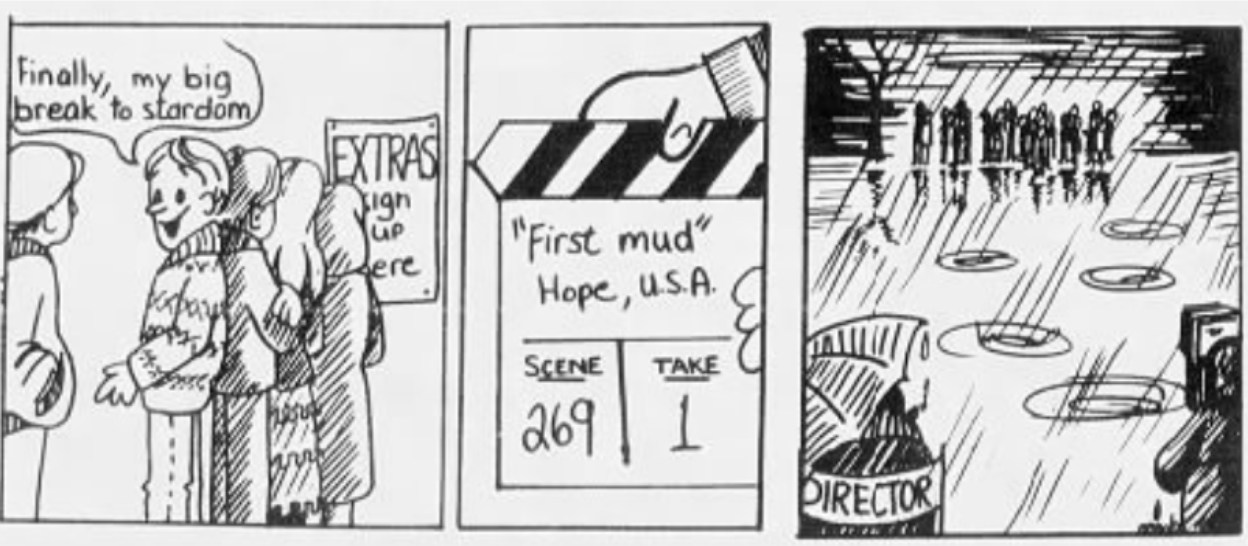
10. Hope Explodes
In this scene, Rambo spectacularly blows up a gas station as a diversion as he plots his final showdown with Sheriff Teasle and his allies. The doomed gas station was built for the movie specifically to be destroyed. The gas station explosion is one of First Blood's most exciting moments and was shot in its entirety with practical effects. The building was only about 13 metres (40 feet) long and six metres (20 feet) deep, and it was constructed with fake gas pumps. In order to pull off the explosion, the set was filled with virtually every combustible that was available. Dynamite, gun powder, gasoline, diesel, and jet fuel were all packed into the small space under the supervision of the film's pyrotechnic specialists. Stakes were high on the night of the shooting. Due to time and budgetary restraints, the crew only had one chance to get the shot right.1
* * *
11. Crossing Lines
At the beginning of the movie, the sheriff drops Rambo off on the bridge to Portland, Oregon. When Rambo defies the sheriff by instead turning around and heading back into town, Teasle arrests him, sparking the beginning of their feud. In reality, this bridge leads east and eventually joins the BC-5 Coquihalla Highway. The original bridge was demolished in 2011. First Blood launched the character of Rambo into worldwide success, but no action hero is complete without a good antagonist. Sheriff Will Teasle, played by Brian Dennehy, is a Korean War veteran who quickly develops a personal vendetta against the young vagrant. While Sheriff Teasle is depicted as a grouchy, volatile, and imposing character, Brian Dennehy was the complete opposite.
* * *
Endnotes
1. The Feud Begins
1. Carli Berry, "40 years of First Blood: Celebrities travelling to rural B.C. town to celebrate Rambo film," Kamloops News, June 26, 2022, online.
2. "Stallone lights up Hope during Filming," THe Chilliwack Progress, December 2, 1981, online.
2. Stunts
1. BC Transportation and Infrastructure, facebook, September 27, 2017, online.
2. "Stallone lights up Hope during Filming," THe Chilliwack Progress, December 2, 1981, online.
3. Sylvester Stallone, (@Officialslystallone), Instagram, August 31, 2019, online.
3. H-Tree
1. Jim Hemphill, "Ted Kotcheff on Making First Blood, Changing Rambo's Suicide Mission and (Not) Working with Kirk Douglas," Filmmaker Magazine, June 7, 2016, online.
2. First Blood, Directed by Ted Kotcheff (Carolco Pictures, 1982), 93 minutes.
4. Hope's Shops
1. Advertisement, The Hope Standard, Nov. 18, 1981, online.
2. Advertisement, The Hope Standard, Nov. 18, 1981, online.
3. Advertisement, The Hope Standard, Nov. 18, 1981, online.
5. The Sheriff's Station
1. "Filming downtown," The Hope Standard, Nov. 25 1981, online.
2. "550 sign for movie," The Hope Standard, Nov. 10, 1981, online.
3. "550 sign for movie," The Hope Standard, Nov. 10, 1981, online.
4. "Filming downtown," The Hope Standard, Nov. 25 1981, online.
5. "Stunt shooting starts," "Filming downtown," The Hope Standard, Nov. 18, 1981, online.
6. The Chase
1. Sylvester Stallone, First Blood, Ultimate Edition, DVD, directed by Ted Kotcheff (Carolco Pictures, Bonus Features, 2004).
2. "Fireworks off and on movie set Kirk Douglas leaves town" Hope Standard, Dec. 16, 1981, online.
7. Outpost Gun Shop
1. Sylvester Stallone, First Blood, Ultimate Edition, DVD, directed by Ted Kotcheff (Carolco Pictures, Bonus Features, 2004).
2. Sylvester Stallone, First Blood, Ultimate Edition, DVD, directed by Ted Kotcheff (Carolco Pictures, Bonus Features, 2004).
3. Sylvester Stallone, First Blood, Ultimate Edition, DVD, directed by Ted Kotcheff (Carolco Pictures, Bonus Features, 2004).
4. Richard Grenier, "Stallone on Patriotism and 'Rambo'" New York Times, June 6, 1985, online.
8. Choosing an Ending
1. Sylvester Stallone, First Blood, Ultimate Edition, DVD, directed by Ted Kotcheff (Carolco Pictures, Bonus Features, 2004).
2. Duncan Bowles, "Sylvester Stallone talks us through the evolution of Rambo," Den of Geek, September 17, 2019, online.
9. Relics
1. "Behind the movie scenes," Hope Standard, December 2, 1985, online.
2. "Behind the movie scenes," Hope Standard, December 2, 1985, online.
3. Sylvester Stallone, First Blood, Ultimate Edition, DVD, directed by Ted Kotcheff (Carolco Pictures, Bonus Features, 2004).
4. Sylvester Stallone, First Blood, Ultimate Edition, DVD, directed by Ted Kotcheff (Carolco Pictures, Bonus Features, 2004).
10. Hope Explodes
1. Ryan Rebalkin and Brian McKinney, "Rambo: First Blood Tourism" September 17, 2022, It's A Long Road: The Rambo Series Podcast, Produced by Apple Podcasts, online.
2. Ryan Rebalkin and Brian McKinney, "Rambo: First Blood Tourism" September 17, 2022, It's A Long Road: The Rambo Series Podcast, Produced by Apple Podcasts, online.
3. Ryan Rebalkin and Brian McKinney, "Rambo: First Blood Tourism" September 17, 2022, It's A Long Road: The Rambo Series Podcast, Produced by Apple Podcasts, online.
4. "Fireworks off and on movie set Kirk Douglas leaves town" Hope Standard, Dec. 16, 1981, online.
11. Crossing Lines
1. Emelie Peacock, "Goodbye to Sheriff Teasle," Hope Standard, May 8, 2020, online.
2. Emelie Peacock, "Goodbye to Sheriff Teasle," Hope Standard, May 8, 2020, online.
3. "Behind the movie scenes," Hope Standard, December 2, 1985, online.
Bibliography
"550 sign for movie," The Hope Standard, Nov. 10, 1981. https://www.newspapers.com/image/561486125/
BC Transportation and Infrastructure, facebook, September 27, 2017. https://www.facebook.com/profile/100064390703682/search?q=rambo
"Behind the movie scenes," Hope Standard, December 2, 1985. https://www.newspapers.com/image/561486271/
Berry, Carli. "40 years of First Blood: Celebrities travelling to rural B.C. town to celebrate Rambo film," Kamloops News, June 26, 2022. https://infotel.ca/newsitem/40-years-of-first-blood-celebrities-travelling-to-rural-bc-town-to-celebrate-rambo-film/it92491#:~:text=Forty%20years%20ago%2C%20a%20terrified,the%20movie%20with%20Rambo%20Day.
Bowles, Duncan. "Sylvester Stallone talks us through the evolution of Rambo," Den of Geek, September 17, 2019. https://www.denofgeek.com/movies/sylvester-stallone-talks-us-through-the-evolution-of-rambo/
Grenier, Richard. "Stallone on Patriotism and 'Rambo'" New York Times, June 6, 1985. https://www.nytimes.com/1985/06/06/movies/stallone-on-patriotism-and-rambo.html
"Filming downtown," The Hope Standard, Nov. 25 1981. https://www.newspapers.com/image/561486218/
"Fireworks off and on movie set Kirk Douglas leaves town" Hope Standard, Dec. 16, 1981. https://www.newspapers.com/image/561486355/
Hemphill, Jim. "Ted Kotcheff on Making First Blood, Changing Rambo's Suicide Mission and (Not) Working with Kirk Douglas," Filmmaker Magazine, June 7, 2016. https://www.slashfilm.com/882333/rambos-defining-first-blood-feature-was-put-in-the-script-by-sylvester-stallone/?utm_campaign=clip
Kotcheff, Ted. Director. First Blood, Carolco Pictures, 1982, 93 minutes.
Peacock, Emelie. "Goodbye to Sheriff Teasle," Hope Standard, May 8, 2020. https://www.hopestandard.com/columns/goodbye-to-sheriff-teasle/
Rebalkin, Ryan and Brian McKinney. "Rambo: First Blood Tourism" September 17, 2022, It's A Long Road: The Rambo Series Podcast, Produced by Apple Podcasts. https://podcasts.apple.com/ca/podcast/its-a-long-road-the-rambo-series-podcast/id1612195887
"Stallone lights up Hope during Filming," THe Chilliwack Progress, December 2, 1981. https://theprogress.newspapers.com/image/77109727/?terms=first%20blood&matc1&fbclid=IwAR3FA9Jac42KomeoltcPYOcLU_q9m2bgWMSUZp7ilfR8JX8C64Hjm3KGTH0
Stallone, Sylvester. First Blood, Ultimate Edition, DVD, directed by Ted Kotcheff (Carolco Pictures, Bonus Features, 2004).
"Stunt shooting starts," "Filming downtown," The Hope Standard, Nov. 18, 1981. https://www.newspapers.com/image/561486174/




